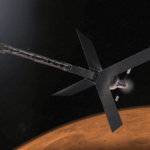April 14, 2017 – Who would have thought that the places to look for life other than here on Earth would be moons and dwarf planets located in the outer Solar System. NASA has given a name to two of the moons circling Jupiter and Saturn calling them ocean worlds. Both are covered in ice and both are now considered the likeliest places where we will find alien life in our immediate neighbourhood of the galaxy. Joining them with very similarar topography are two dwarf planets, Ceres and Pluto.
Arthur C. Clarke had speculated in his science fiction novels and short stories that we would discover life on a Jovian or Saturnian moon. And now the science has caught up with the fiction. Enceladus and Europa are considered the top targets for planetary exploration in the next two decades. Both feature an icy crust and a liquid ocean beneath. Both experience the tidal tugs of their host planets which generate the heat that keeps that water from freezing solid in the outer reaches of the Solar System. And with Pluto and Ceres we may find similar environments energized by their own internal heat, not by tidal forces.
The question is, with the presence of water on both, where life first emerged on Earth, can there be some form of life on these two moons and possibly on the two dwarf planets? We’re not talking about oxygen breathing life, but rather the type of life found at the bottom of our oceans today where deep sea vents pour out mineral-rich hot water that serves to be the elixir for a complex of life. This is life that feeds off methane, sulfur, phosphorus and other elements found in the hot water stream.
How do we know that something is going on in these ocean worlds?
Yesterday when NASA began describing its latest findings it focused on Enceladus and Europa, sharing what Cassini has learned about the former and the Hubble Space Telescope and the now-defunct Galileo Jovian orbiter about Europa. The information session didn’t touch on Ceres or Pluto, but it could have.
The evidence presented focused on observed plumes coming from both moon’s surfaces. Enceladus is a small moon. No one expected it to be dynamic before Cassini arrived in the Saturnian system. It was thought to be frozen solid, that is, until Cassini flew by, not once but several times, building a complex picture and data that unmistakably points to an active small world. Cassini’s cameras photographed plumes of vapour rising from Enceladus southern polar region. The onboard Ion and Neutral Mass Spectrometer sampled the plumes and found 98% water vapour, 1% hydrogen and the remainder a mix of carbon dioxide, methane and ammonia. The hydrogen was the big surprise because the element is so light scientists would expect there to be nothing emanating from the moon at this stage of its geological history. All should long ago have escaped into space. But the hydrogen could only exist mixed in with the water if there was something chemically active going on beneath the icy crust. On Earth, we observe hydrogen in the effluent coming from deep sea vents referred to as hydrothermals. These vents may have been where life first appeared on Earth before there was much in the way of free oxygen in our atmosphere. And hydrogen gets produced by a chemical reaction known as methanogenesis. And when found with methane, as has been discovered on Enceladus, it could mean the presence of amino acids. And where amino acids are found so is DNA here. So why not there?
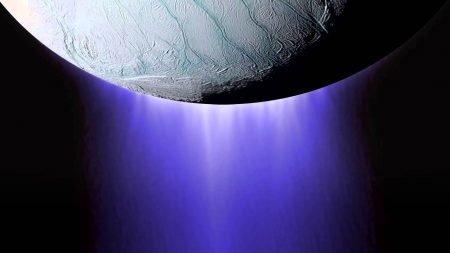
The observations of Europa are similar but less definitive largely because we have no spacecraft in proximity to do intense science like we have in the neighbourhood of Saturn. Europa has a liquid ocean below its icy crust and there are hot spots in the crust mapped by Galileo, that align perfectly with Hubble Space Telescope observations showing plumes rising from the moon’s surface. Scientists, knowing what they have learned from Enceladus, are now comfortably convinced that Europa is likely generating water vapour, hydrogen, and traces of other gasses akin to the Saturnian moon. They want to take a closer look and have planned a mission they call the Europa Clipper to study the phenomenon up close. The mission also includes a lander to do a search for life traces on the icy surface.
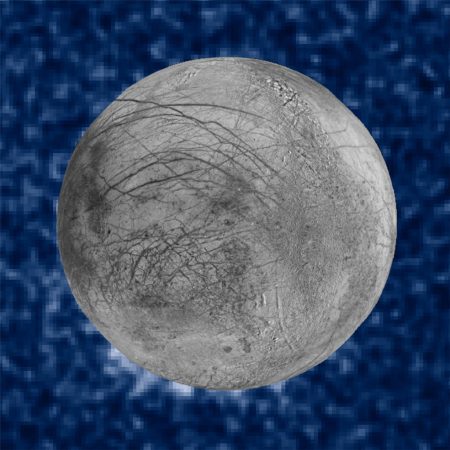
So what about Ceres and Pluto?
The Dawn spacecraft which has been studying Ceres, the largest member of the Asteroid Belt, has observed the presence of water and organic compounds on the dwarf planet. The onboard Visible and InfraRed Mapping Spectrometer investigated one of Ceres’ craters and found methyl and methylene compounds similar to hydrocarbons found here on Earth. The existence of what has been described as a large reservoir of water ice, ammonia, salts and organics has fundamentally altered scientists’ views about the dwarf planet. The potential of a water ocean beneath the crust is now deemed highly likely.
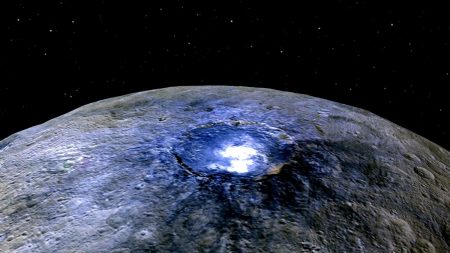
And New Horizons’ visit to Pluto produced its own surprises. In observing the heart-shaped surface feature, the Tombaugh Regio and its alignment in tidal lock with the dwarf planet’s largest moon, Charon, scientists have become convinced that there is likely a viscous icy ocean of water underneath the dwarf planet’s surface and that Charon may have also harboured a subterannean ocean in the past. It is believed that Pluto may still be geologically active, not to the extent of Earth, but enough to allow for water to flow freely under its icy crust And where there is water, NASA scientists believe there is the opportunity for life to emerge.
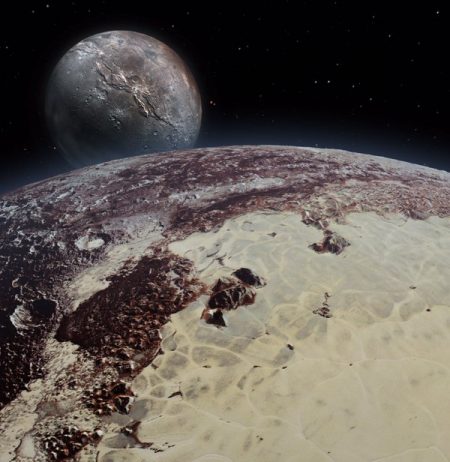
These four candidates for alien life were never considered in the past. Today NASA knows that our Solar System has water showing up in lots of places. And not just water, but chemical compounds that point to some interesting additional places to look for life. Ganymede and Callisto, two other Jovian moons, Titan, Saturn’s largest moon joins Enceladus and Mimas as ice worlds. And Triton, Neptune’s largest moon, has observed active geysers also suggesting a subsurface ocean world. And note that we haven’t mentioned ice found at the poles of our own Moon, subsurface ice and polar ice caps on Mars, or water vapour in the swirling clouds of Jupiter. Nor have we talked about discoveries of water on exoplanets, a whole other topic to explore.


